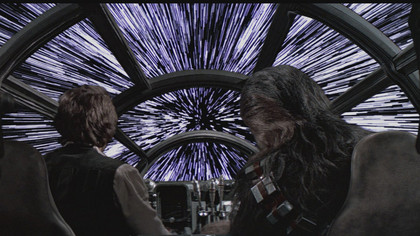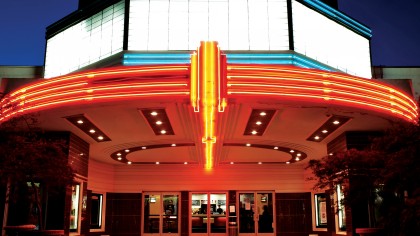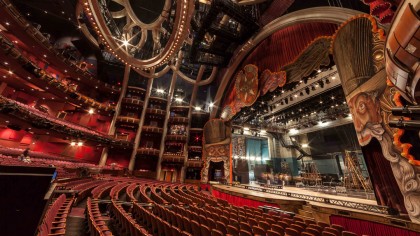
This is an old feature that has been republished for TechRadar's Movie Week. The original piece was published in 2013.
Legendary pioneer of audio technology Ray Dolby had a name that was synonymous with sound quality, both theatrically and in the living room. After all, this was the man who invented audio cassette noise reduction in the 1960s.
Although Ray always fancied himself more as a 19th century engineer, rather than an audio boffin, he consistently pushed the envelope when it came to audio entertainment technology and signal processing.
The planet was a better sounding place as a result. Here are our six favourite things that Ray Dolby gave to the world.
Dolby Noise B-Type reduction

The year is 1968, the location South London: a small audio company called Dolby Labs is making hi-fi history. At the time, vinyl records were really the only high(ish) fidelity audio option in town, but a breakthrough method of suppressing tape hiss on recordings was about to change all that.
Dolby B-type noise reduction was nothing short of a revelation. Suddenly the humble compact cassette, useful but much maligned since its introduction, became a credible music carrier. By the early seventies, Dolby noise reduction had entered the tech lexicon, and music lovers and sound professionals alike were used to hearing things with a lot more clarity.
Dolby Stereo

In 1975 Dolby Labs introduced what was to become the cornerstone of modern surround sound audio.
Sign up for breaking news, reviews, opinion, top tech deals, and more.
By cleverly matrixing additional optical analogue audio tracks onto 35mm cinema release prints, Dolby Stereo allowed four channel audio to be read by film projectors equipped for two. Suddenly movie soundtracks could contain left, right, centre and (monophonic) rear information.
George Lucas's Star Wars is often credited with introducing Dolby Stereo surround into cinemas in 1977. However while that sci-fi hit was the prime catalyst for the widespread introduction of multichannel sound systems, the first movie to actually employ Dolby Stereo was Barbra Streisand's A Star is Born. Babs' weepie was a bit light on spaceship fly-overs, so it's no surprise that few remember its sonic significance.
Dolby Pro Logic
In 1984, Dolby began licensing his cinema surround sound decoder for consumer use. Dolby Surround decoders were able to exploit the surround information preserved on Dolby Stereo movie titles when they were released as hi-fi VHS tapes and Laserdiscs.
This innovation kick-started the home cinema revolution and led to Dolby Surround (and eventually Pro Logic) decoding appearing on everything from standalone processors and AV receivers to TVs. Hands up if you remember when Toshiba and Hitachi Dolby Surround tellies were the thing to have?
The company also licensed its Dolby Stereo matrixing system to TV programme makers, as Dolby Surround. That particular logo is still often seen on pre 5.1 programme material.
Ray Dolby
"I would have liked to have been in a position to make a better steam engine, or to invent the first internal combustion engine. I just regret that I was born in a time when most of those mechanical problems had already been solved and what remained were electronic problems."
Dolby SR

Introduced in 1986, Dolby SR (for Spectral Recording) brought true high-fidelity to movie theatres for the first time. Only ever deployed in premium venues, where the amplification and speakers where deemed of a suitable standard, Dolby SR is now largely forgotten, but it represented the ultimate manifestation of Ray's analogue surround sound cinema dream.
Dolby Digital

Originally known as AC-3, Dolby Digital was first heard theatrically in 1991.
Making its debut on Tim Burton's Batman Returns, the 5.1 audio code was ingeniously printed onto 35mm prints between the sprocket holes of the film. A Dolby Digital soundhead with a CCD scanner, fitted to the projector, would then read this digital information.
In truth, movie goers hearing Dolby Digital in cinemas for the first time were hardly guaranteed a premium listening experience, as the high dynamic range of the format often sounded ear-shredding when deployed in auditoriums ill-equipped for the advance.
Thankfully things improved as cinema sound systems grew in sophistication. Dolby Digital was to become the defacto audio standard on DVD from the mid nineties, and is now commonplace on digital TV broadcasts. The successor to DD 5.1, Dolby TrueHD, was introduced in 2005. However this ultra high-quality lossless audio format has failed to replicate the ubiquity of Dolby Digital.
Dolby Atmos

Dolby Atmos is the latest multichannel cinema surround sound solution to be inspired by the pioneering work of Ray Dolby. Unlike its predecessors, Dolby Atmos is an object, rather than channel-based sound system. This takes sonic immersion to an entirely new level.
Using a process called adaptive rendering, audio engineers are able to place a sound effect anywhere spatially within an auditorium, with a precision that's simply impossible with conventional steering technologies.
There are a growing number of Dolby Atmos screens around the world. In the UK there are now 21 screens capable of the full Atmos experience with another 4 in Ireland. That's not a huge number, but there are more and more being unveiled.
And the next audio revolution has to start somewhere, isn't that right Ray?

Steve has been writing about AV and home cinema since the dawn of time, or more accurately, since the glory days of VHS and Betamax. He has strong opinions on the latest TV technology, Hi-Fi and Blu-ray/media players, and likes nothing better than to crank up his ludicrously powerful home theatre system to binge-watch TV shows.